Why Automate the Tire Handling Process?
This customer owns one of the largest tire warehouses in Japan. During the peak order period, there are tens of thousands of tires out of the warehouse every day. However, efficient tire handling is somehow a tricky task. Poor tire handling can have sweeping consequences on production flow, employee safety, and warehouse management.
Tires are large in size (600-800 mm) and heavy in weight (9-70 kg). Manual handling requires lots of physical labor, which increases the chance of workplace accidents and slows down the production process.
New tires carry vulcanized substances and some solid particles. Manual handling of tires, especially in the long term, can be dangerous because they are directly exposed to the air filled with harmful substances.
Last but not least, the warehouse integrates handling, barcoding, and conveying processes. The manual single-line working mode is inefficient; meanwhile, human errors can cause the accumulation of goods and affect warehouse management efficiency. So the warehouse is in urgent need of automation transformation.
Challenges
01
The challenge to accurate 3D imaging
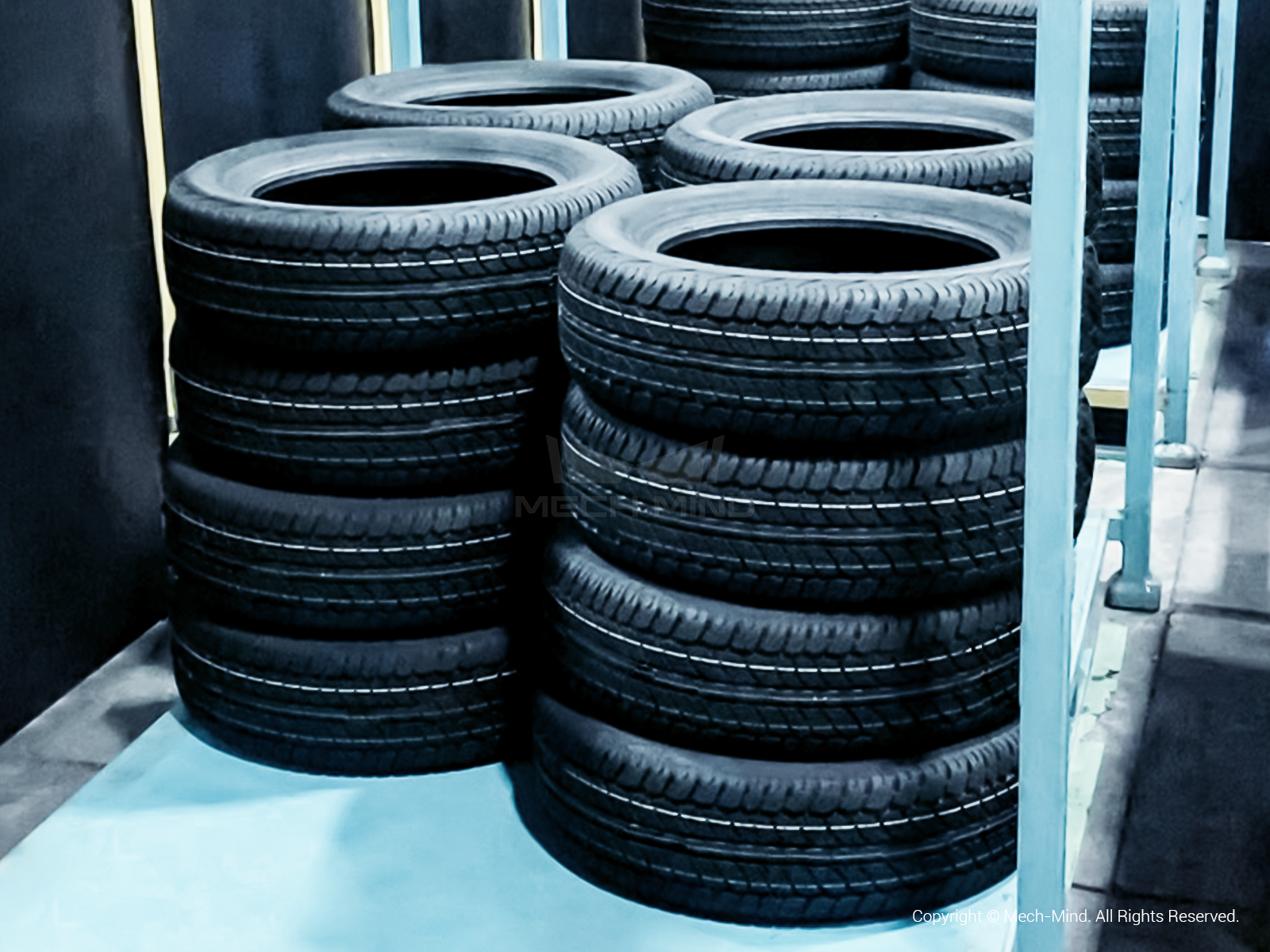
Tires are made of black rubber, which may absorb light easily. And they are produced in, to some extent, complex structures—with deep grooves on the surface. This also proves a difficult challenge to accurate 3D imaging.
02
Works under ambient light interference
The ambient light interference in the factory is harsh. The robot cell is at the warehouse entrance, and the sunlight comes in during the day. Moreover, there is a lighting source on the top of the warehouse.
03
Requires large FOV
The tires are stacked on pallets and transported to the defined place by forklift. The full pallet size can be as large as 1500 x 1800 x 1500 mm. Some extra space must be kept to guarantee that the robot moves freely between the pallet and the conveyor line. This means the 3D camera must have a large field of view and a large depth of field to cover the entire workstation.
04
Operates in a compact space
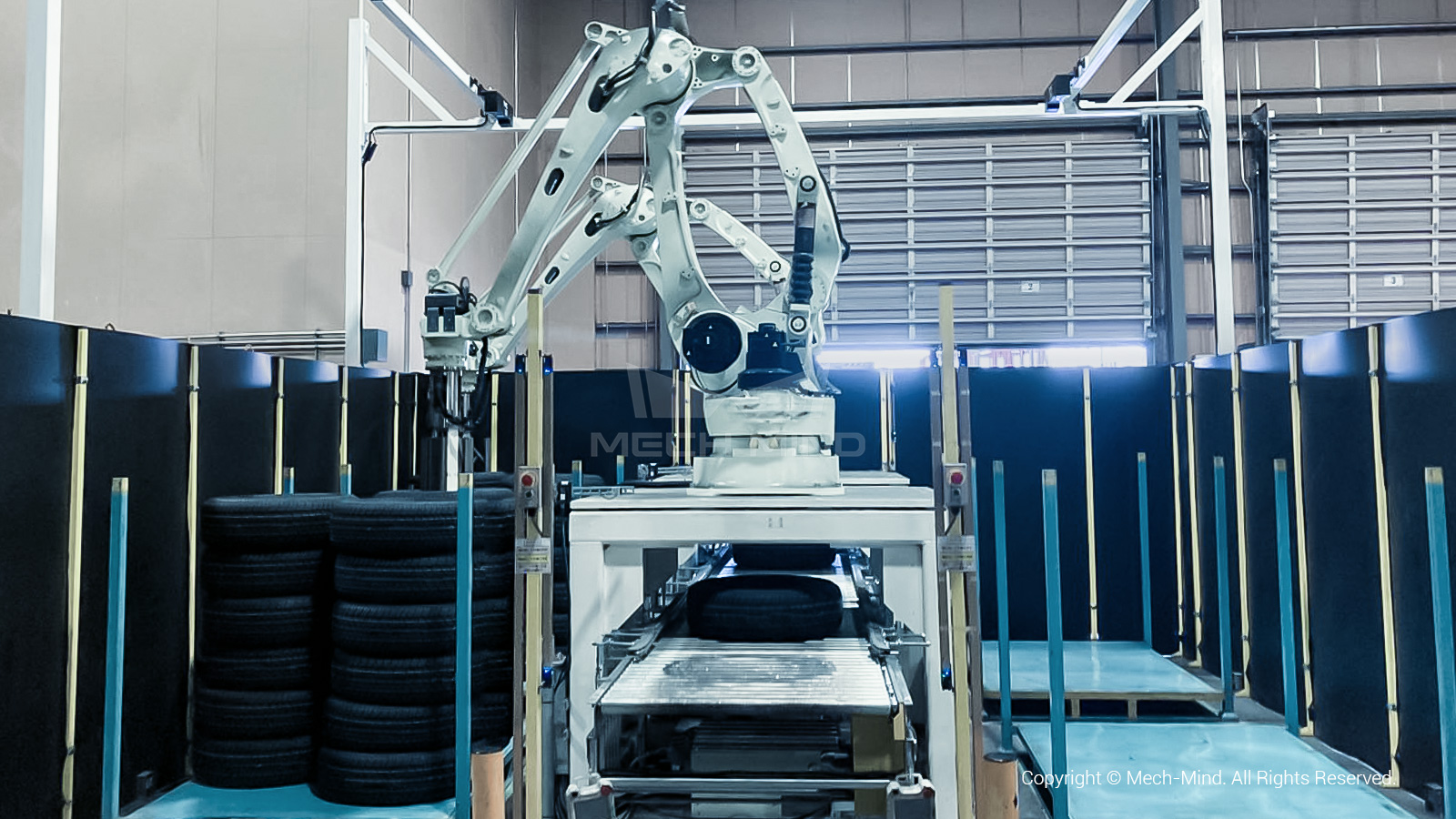
The site is a typical Japanese plant with an extremely compact layout. The code reading and conveyor systems are integrated into a single workstation where two robots work simultaneously. The 3D vision system must have path planning and collision detection capability, so it can navigate robots and prevent them from colliding with the surroundings.
The Mech-Mind AI + 3D Vision Solution
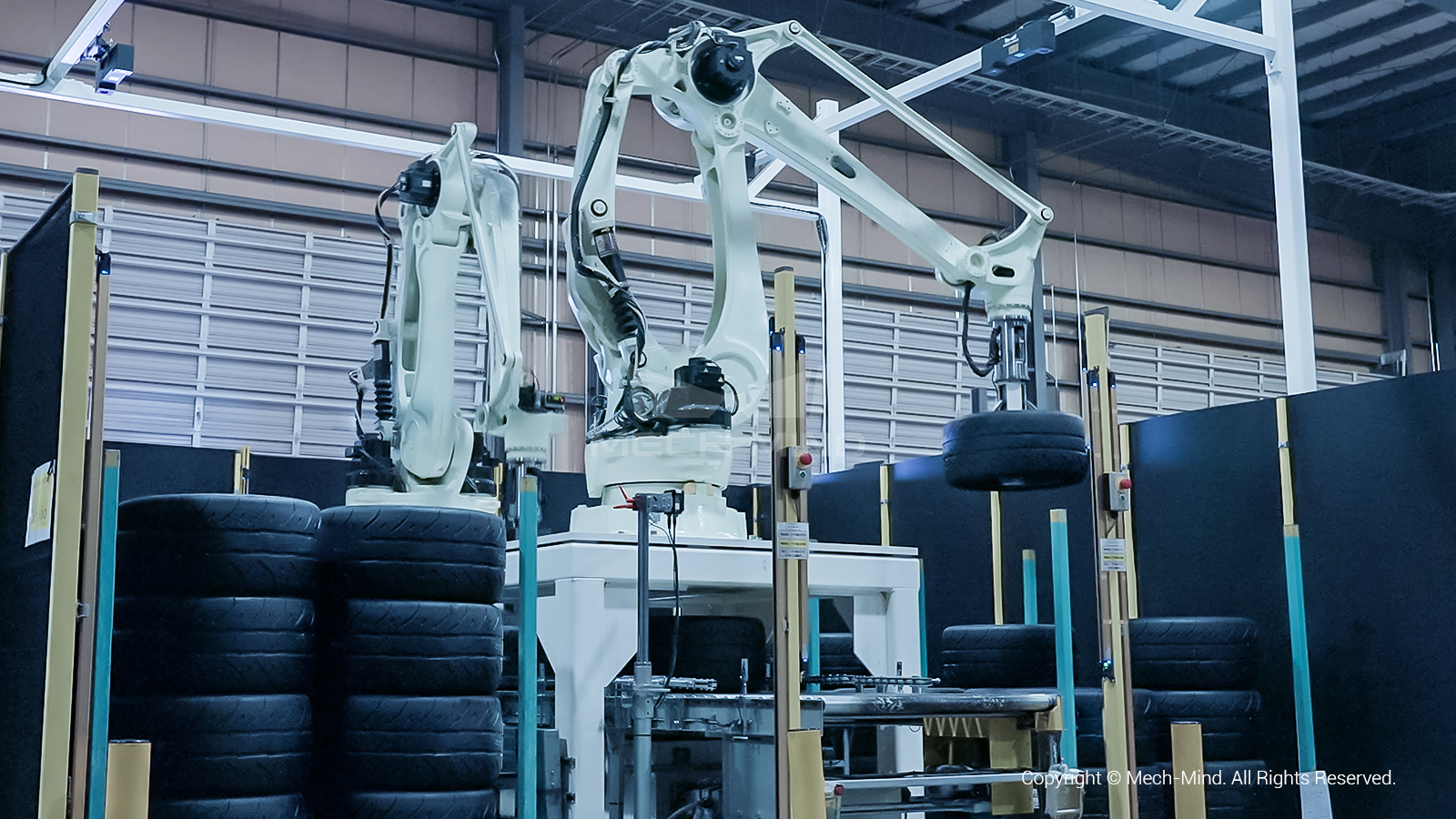
01
Enables accurate and reliable handling
Mech-Eye LSR L industrial 3D camera obtains accurate 3D information of tires with black surfaces and deep grooves. It can also enable clear and detailed 3D point cloud generation even under demanding light conditions (> 30000 lx).
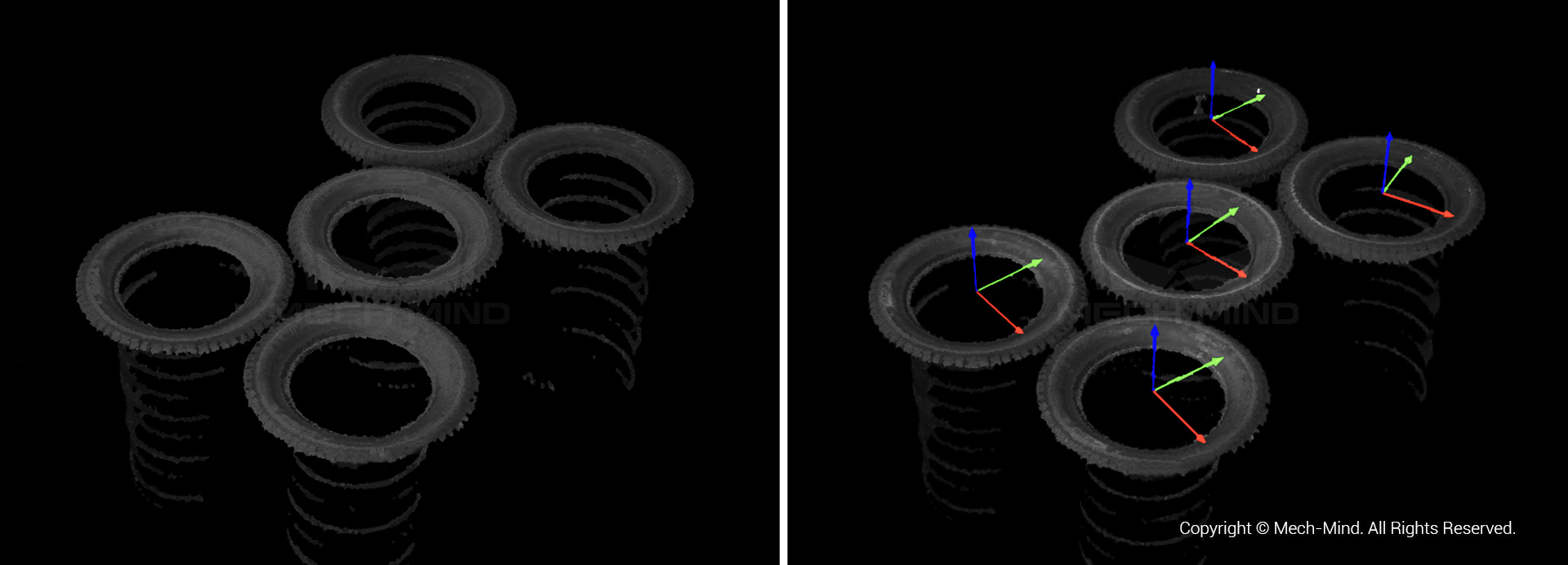
Mech-Eye LSR L can respond to working conditions requiring high accuracy and large FOV. The camera's FOV (3000 × 2400 mm @ 3.0 m) can cover larger pallets with in-place offsets and leave enough room for robot movement.
Mech-Mind's solution perfectly integrates the 3D vision system with the robot and end effector. The 3D vision system predicts possible collisions in advance, optimizes robot motion trajectory, and guides the robot to pick accurately in a compact space.
02
Enhances flexibility
Powerful 3D machine vision software supports various tires of different specs. It can quickly adapt to new products to respond to changing market demand.
By seamlessly integrating with barcoding and transporting systems, Mech-Mind's 3D vision system connects each logistical link in the warehouse, enabling dynamic transfer without manual intervention.
03
Improves efficiency
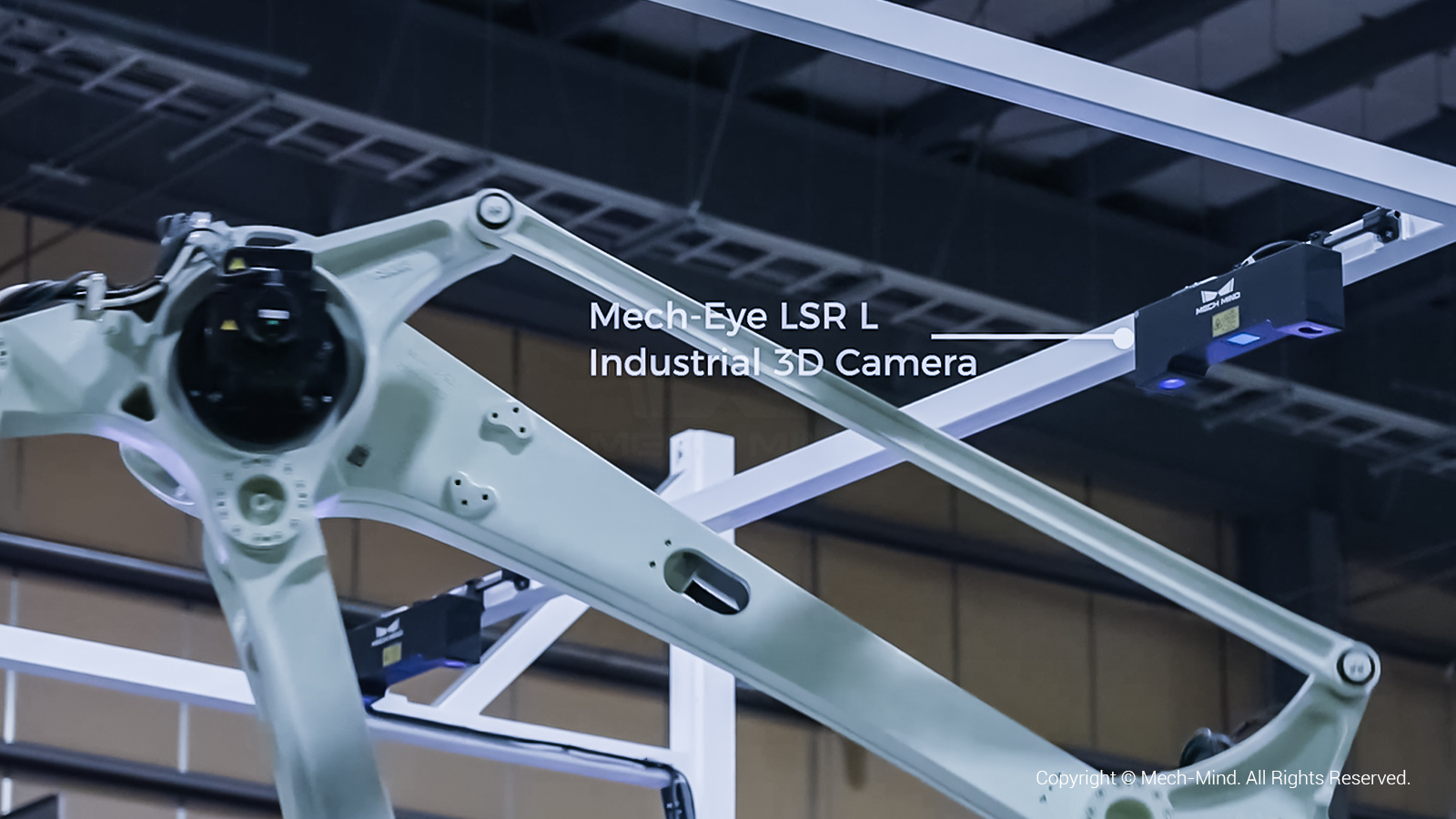
Works faster: The 3D vision system works concurrently with the robot by fixing the camera above the workstation statically, so the image processing time will not occupy the overall cycle time. A single workstation can process more than 1600 tires per hour, dramatically speeding up the overall production process.
Works non-stop: The automated workstation can perform handling 24/7 without getting tired; the throughput is increased nearly 2 times, guaranteeing order delivery even in peak time. Employees can get rid of performing fatigue and monotonous tasks. So the warehouses can allocate staff to more creative and meaningful work, adding value to warehouse management.